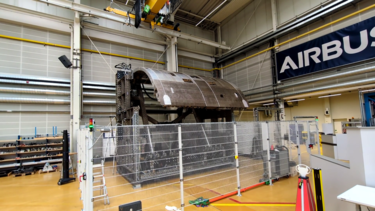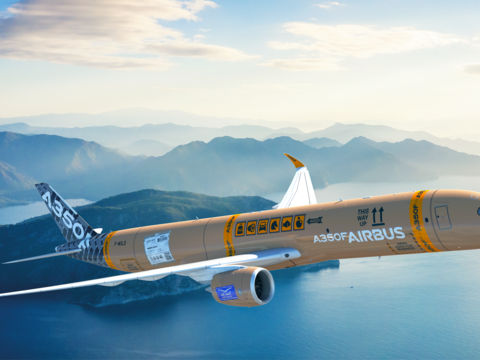Production of the major components of the A350F is well underway at the various Airbus sites – in preparation for final assembly start of the first aircraft. As this activity takes place ‘behind the scenes’, let’s familiarise ourselves with the standout features of what will be the industry’s largest and most operationally capable main-deck cargo door:
- Large door size: The most obvious attribute is its overall size – the A350F will have the largest main-deck cargo door for unprecedented freight access in any commercial aircraft (including the 777 and 747 freighters): With a cut-out width of 4.5 metres (175 inches) and a clear opening of 4.3 metres (169.5 inches). In fact this door is 15 percent wider than the 3.7 metres (146 inches) wide door of the Boeing 777 Freighter – allowing for the seamless ‘one-go’ entry of large items, such as high bypass aero engines for today's large airliners. The large door allows an engine to be loaded in only a few minutes – compared with around an hour for aircraft with smaller cargo doors.
- Aft fuselage door location: Another new aspect for Airbus is the design choice for a rear-fuselage location of the MDCD. A rear main deck cargo door preserves a safe centre of gravity during loading, since the first containers or pallets to enter the aircraft are moved from the door at the rear towards the front of the aircraft.
- Composite door structure: The next 'unique' feature is not only an Airbus first, but also an 'industry-wide' one: the MDCD's structure is made from composite materials. While this choice would make sense given that the A350's fuselage is already made from composites, a large door made from composites is of course going to be lighter than one made from aluminium.
- Electrical door open/close actuation system: The A350 Family was from its very outset conceived as a 'more electric' aircraft. Thus the traditional reliance of pneumatics and hydraulics throughout previous-generation aircraft has today been partly replaced by electrically assisted actuation. It made sense therefore that the new MDCD's opening / closing mechanism would be driven by electrical rather than hydraulic power. On the one hand it avoids the need for hydraulic fluid lines to the door, though on the other hand it uses a substantial electrical motor to operate the door in all potential conditions.

At the time of writing, the teams in Bremen were starting the operations of the System Integration Bench (SIB) - pictured above. The latter is dedicated to MDCD integration tests and securing the right opening and closing of the door in all potential configurations for the aircraft on ground. This marks an important step for the maturation of the aircraft for its operations performance.
Note:
In our previous article on the A350 Freighter (“A350F”) programme we provided an update on how the Final Assembly Line (FAL) in St Martin, Toulouse is adapting its stations to accommodate the new variant's subassemblies into the production line.

